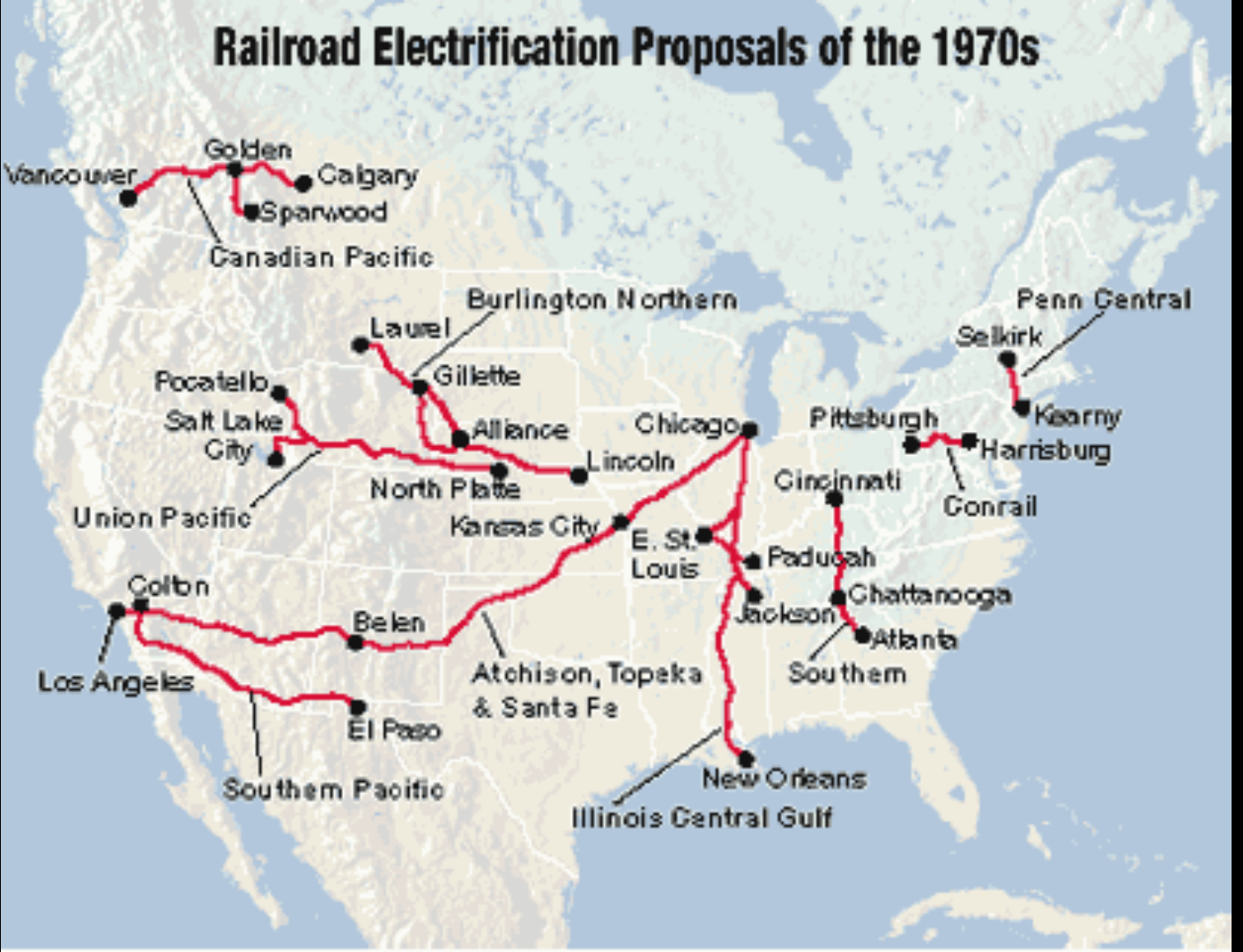Orlen rozpoczął testy lokomotywy napędzanej wodorem, kupionej od Pesy. To pierwszy taki pojazd w Polsce. Do 20230 roku paliwowy gigant planuje przeznaczyć 7,4 mld zł na inwestycje w technologie oparte na odnawialnych źródłach energii.
First hydrogen locomotive started working in Poland.
The Milwaukee Road operated a 2,300 mile electrified line through the heart of the Rocky mountains. There’s also the 5,000 mile trans-siberian railway which is electrified
There have been various proposals for electrifying thousands of miles of track since the 70s
It’s true. Electrified rail lines do exist in a many places, but not quite everywhere. Since there are also non-electric lines, there’s also a time and a place for non-electric locomotives.
A line crossing the Rockys can hardly be considered remote, (at least in an integrated system) it should get tons and tons of through-traffic. It’s not about where the line is but what it connects.
A line can be way less remote, say just ten kilometres from a million inhabitant metropolis, but still see very limited traffic as the area is rural, and only have hourly passenger service and nothing else, maybe a couple of grain wagons in harvesting season and electrifying it would not amortise in a century or ever (because increased maintenance costs). Completely different situation to having through-traffic 24/7 bumper to bumper somewhere at the arse of the world.
If the government has full monopoly on everything rail related, then connecting two places becomes a political question. It may not make economic sense, but in the big picture of an entire country and its internal politics it might be a sensible thing to do regardless.
The Milwaukee Road operated a 2,300 mile electrified line through the heart of the Rocky mountains. There’s also the 5,000 mile trans-siberian railway which is electrified
There have been various proposals for electrifying thousands of miles of track since the 70s
It’s true. Electrified rail lines do exist in a many places, but not quite everywhere. Since there are also non-electric lines, there’s also a time and a place for non-electric locomotives.
Yeah. It’s just that distance and remoteness aren’t good excuses to avoid overhead electrification
A line crossing the Rockys can hardly be considered remote, (at least in an integrated system) it should get tons and tons of through-traffic. It’s not about where the line is but what it connects.
A line can be way less remote, say just ten kilometres from a million inhabitant metropolis, but still see very limited traffic as the area is rural, and only have hourly passenger service and nothing else, maybe a couple of grain wagons in harvesting season and electrifying it would not amortise in a century or ever (because increased maintenance costs). Completely different situation to having through-traffic 24/7 bumper to bumper somewhere at the arse of the world.
If the government has full monopoly on everything rail related, then connecting two places becomes a political question. It may not make economic sense, but in the big picture of an entire country and its internal politics it might be a sensible thing to do regardless.